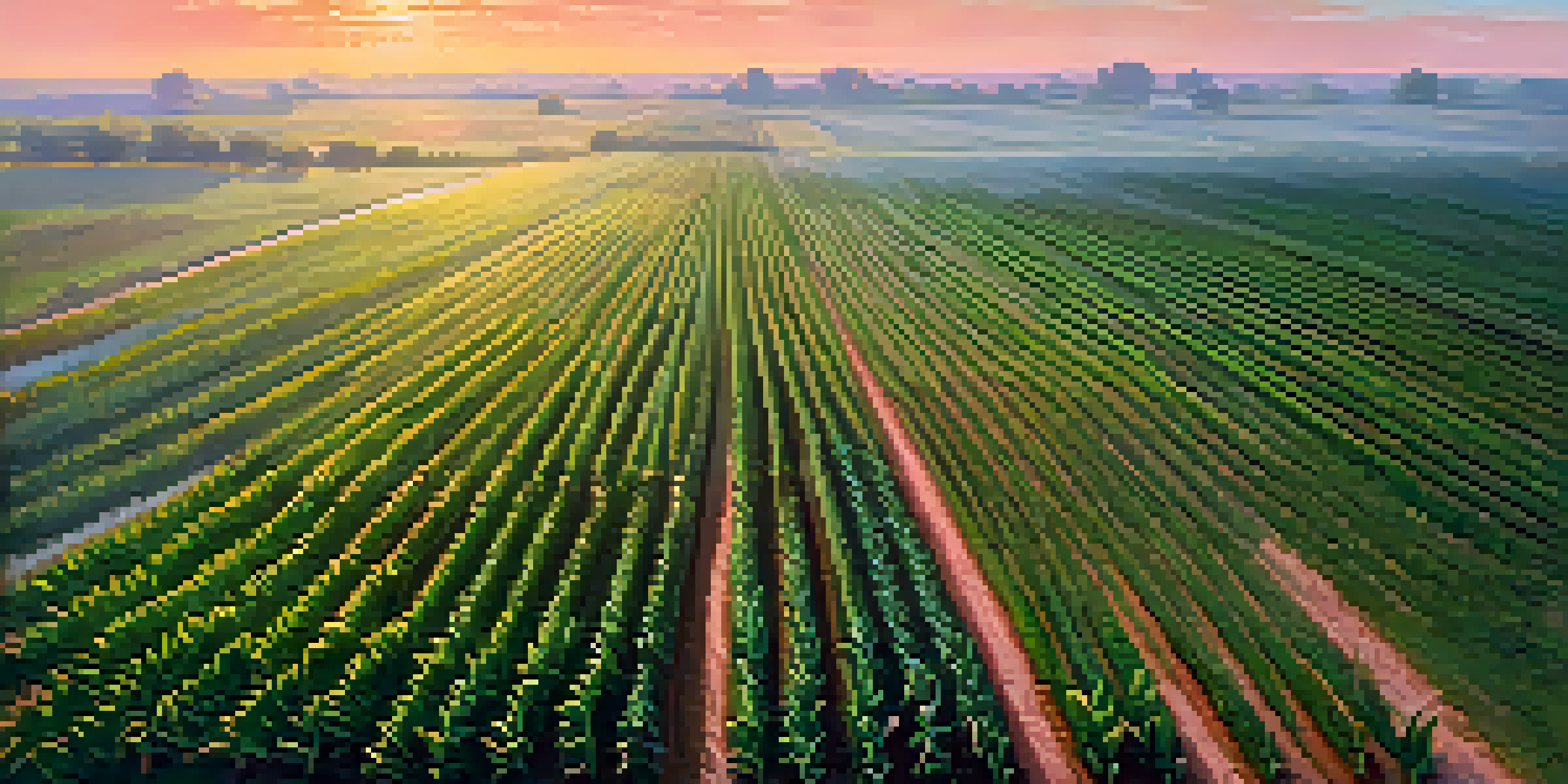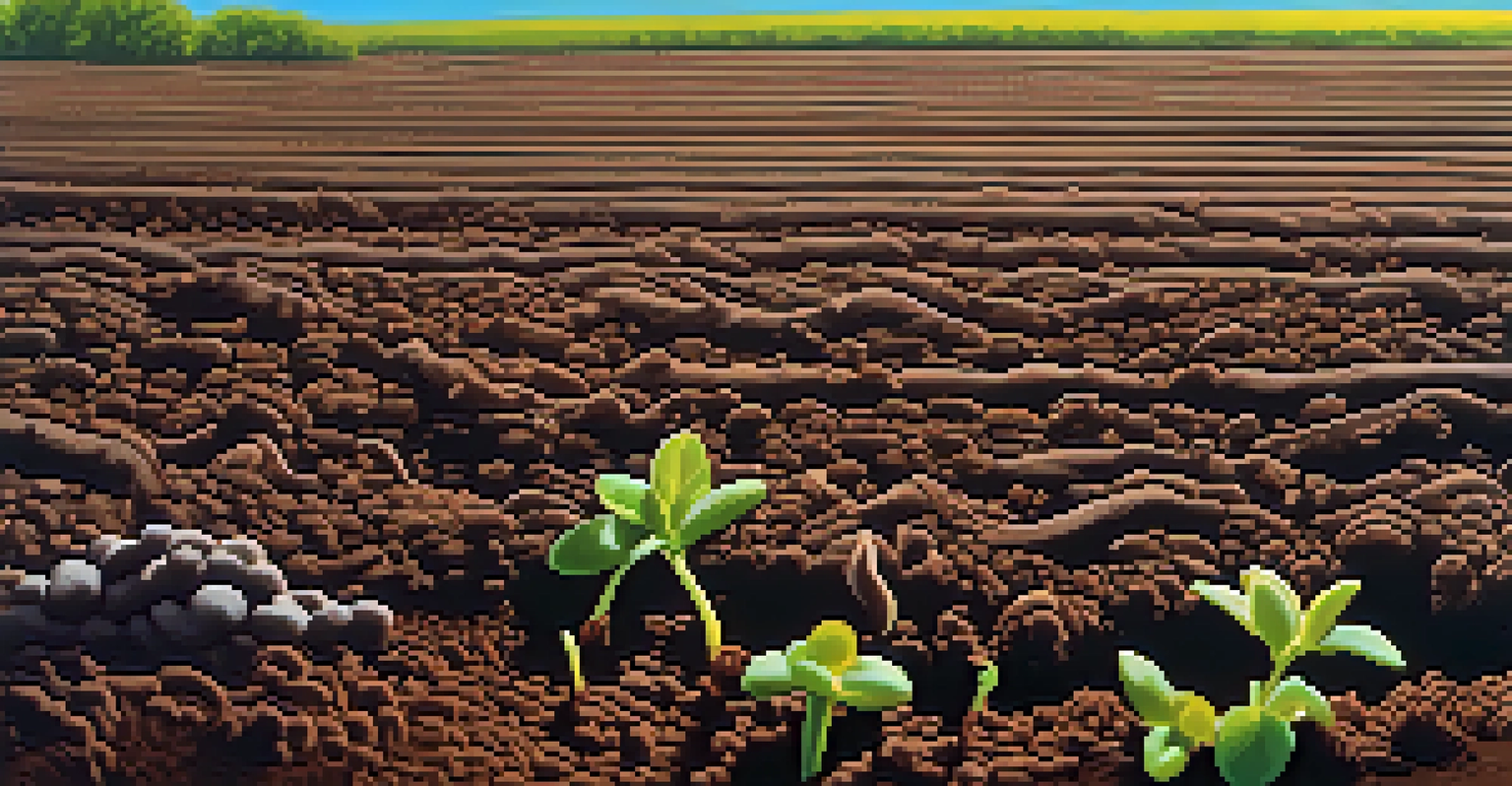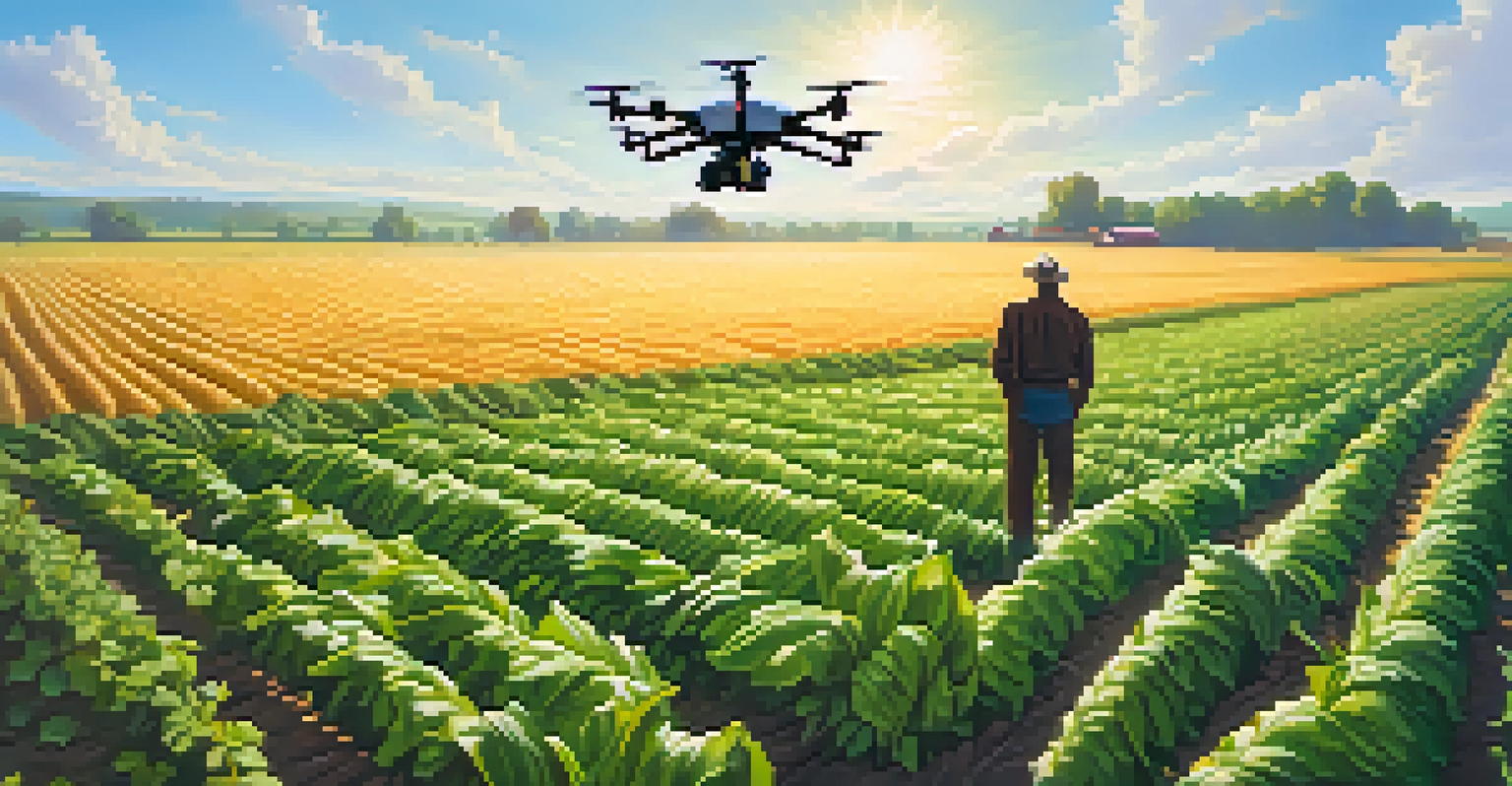Impact of Climate Change on Illinois Agricultural Production

Understanding Climate Change and Its Global Context
Climate change refers to long-term shifts in temperatures and weather patterns, largely driven by human activities. It's a global issue, affecting ecosystems, economies, and communities worldwide. In Illinois, these changes manifest in various ways, impacting the state's rich agricultural sector.
The climate crisis is not a political issue, it is a moral and spiritual one. It is also our greatest opportunity to lift global consciousness to a higher level.
Farmers in Illinois rely heavily on predictable weather patterns for crop yields, but climate change disrupts this reliability. For example, extreme weather events like flooding and droughts are becoming more frequent, challenging traditional farming practices. This unpredictability can lead to significant financial losses for farmers, affecting their livelihoods.
Moreover, climate change is not just about temperature; it's also about how these changes affect pests and diseases. Warmer temperatures may lead to an increase in pests that threaten crops, further complicating the farming landscape in Illinois. Understanding these dynamics is crucial for developing effective agricultural strategies.
Rising Temperatures and Crop Viability in Illinois
Illinois has experienced a rise in average temperatures, which directly impacts crop viability. Certain crops, such as corn and soybeans, thrive within specific temperature ranges. As temperatures rise, there is a risk that these crops may not reach their full potential, resulting in lower yields.

For instance, when temperatures exceed optimal levels during critical growth stages, crops can suffer from heat stress. This can lead to decreased photosynthesis, impacting the plants' ability to grow and produce. Farmers may find themselves needing to adapt their planting schedules to these shifting conditions.
Climate Change Disrupts Farming
Illinois farmers face unpredictable weather patterns, leading to significant challenges in crop yields and financial stability.
In addition to temperature, the length of the growing season is changing. While a longer season might seem beneficial, it can also lead to challenges, such as increased competition from weeds and pests. This means that farmers must stay vigilant and adapt to a new set of agricultural challenges.
Shifting Precipitation Patterns Affecting Water Supply
Climate change is altering precipitation patterns, leading to both floods and droughts in Illinois. Farmers depend on consistent rainfall for their crops, but the increasing variability can cause significant problems. For example, heavy rainfall can lead to flooding, damaging crops and delaying planting.
We do not inherit the earth from our ancestors; we borrow it from our children.
Conversely, prolonged dry spells can deplete soil moisture, stressing crops that require consistent watering. This duality can make it difficult for farmers to plan and manage their resources effectively. As a result, many are exploring irrigation options, which can be costly and may not always be sustainable.
Understanding local weather patterns and investing in water conservation strategies are becoming essential for Illinois farmers. By employing techniques such as rainwater harvesting or drought-resistant crops, farmers can better navigate these unpredictable changes in precipitation.
Impact of Extreme Weather Events on Crop Yield
Extreme weather events, such as storms, tornadoes, and hail, are becoming more common due to climate change. These events can devastate crops in a matter of minutes, leaving farmers with little recourse. For instance, a sudden hailstorm can shred a cornfield, resulting in a total loss for that season.
Farmers often find themselves scrambling to recover from such events, which can lead to financial instability. Crop insurance can help, but it may not cover all losses or the emotional toll associated with losing a season's worth of hard work. As these events increase, farmers are left wondering how to best protect their livelihoods.
Extreme Weather Threatens Crops
Increasing occurrences of extreme weather events, such as storms and hail, can devastate crops quickly, impacting farmers' livelihoods.
Being proactive is crucial in the face of such unpredictability. Farmers are increasingly investing in protective measures, such as crop covers and diversifying their crops to mitigate risk. However, even with these strategies, the threat of extreme weather looms larger than ever.
Pest and Disease Pressure Due to Changing Climates
As temperatures rise and weather patterns shift, pests and diseases are becoming a significant threat to Illinois agriculture. Warmer conditions can create a more favorable environment for pests, leading to increased populations that can devastate crops. This means farmers may need to invest more in pest management strategies to protect their yields.
For example, the expansion of certain pests can lead to increased pesticide use, which raises concerns about environmental impact and sustainability. Farmers must balance the need for crop protection with the responsibility of maintaining a healthy ecosystem. This delicate balance is becoming increasingly challenging in a changing climate.
Integrating integrated pest management (IPM) techniques can help farmers address these challenges. By combining biological, cultural, and chemical practices, farmers can effectively manage pests while minimizing their ecological footprint. However, staying informed about pest trends and adapting strategies is crucial for long-term success.
Soil Health and Climate Change: A Critical Connection
Healthy soil is the backbone of successful agriculture, but climate change poses risks to soil health in Illinois. Increased rainfall can lead to soil erosion, washing away valuable nutrients needed for crops. Conversely, drought conditions can dry out soil, making it less fertile and harder to cultivate.
Maintaining soil health is not just about preventing erosion or degradation; it’s also about fostering biodiversity. Healthy soils support a range of organisms that contribute to nutrient cycling and plant health. As climate change alters these dynamics, farmers must prioritize soil management practices that promote resilience.
Soil Health is Crucial for Resilience
Maintaining healthy soil is essential for successful agriculture, as climate change risks soil erosion and nutrient depletion.
Techniques such as cover cropping and reduced tillage can help build healthier soils. These practices improve soil structure, enhance moisture retention, and reduce erosion. By focusing on soil health, Illinois farmers can better equip themselves to face the challenges posed by climate change.
Adapting Agricultural Practices for a Sustainable Future
In light of the challenges posed by climate change, Illinois farmers are seeking innovative approaches to adapt their agricultural practices. This includes exploring crop diversification, which can enhance resilience to pests and changing weather. By planting a variety of crops, farmers can reduce the risk of total loss from a single failure.
Additionally, many farmers are turning to technology to improve efficiency and sustainability. Precision agriculture employs data-driven decisions to optimize planting, watering, and harvesting. This not only helps in maximizing yields but also in conserving resources, which is crucial in an era of climate uncertainty.

Community collaboration and education are also key in these adaptation efforts. Farmers can share knowledge, experiences, and resources to develop best practices for sustainable agriculture. By working together, the agricultural community can create a more resilient future in the face of climate change.